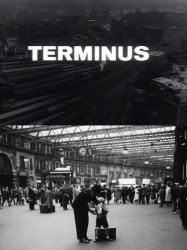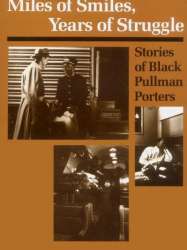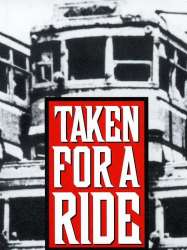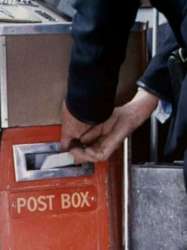Métamorphose d'une gare is a film of genre Documentary directed by Thierry Michel
Métamorphose d'une gare (2010)

If you like this film, let us know!
Métamorphose d'une gare (English: Metamorphosis of a Station) is a 2010 documentary film directed by Thierry Michel that follows the construction of the modern new railway station of Guillemins in Liège, Belgium.
Synopsis
The new Guillemins station in Liège was a huge project undertaken by the Spanish architect Santiago Calatrava, who had already directed construction of stations in Zurich, Lisbon and Lyon. The site presented many challenges. The film follows the project from start to end over a nine-year period. It documents the issues, frictions and tension of the project as well as the pride and enthusiasm of the people involved. The result was a modern cathedral of European high-speed rail. The project was controversial, being criticized as being too grandiose, too expensive to maintain and not well-adapted to the Belgian climate. In the process many old buildings were destroyed and the whole neighborhood was disrupted.Comments
Leave comment :
Suggestions of similar film to Métamorphose d'une gare
There are 7 films with the same director, 8866 with the same cinematographic genres, 7108 films with the same themes (including 32 films with the same 3 themes than Métamorphose d'une gare), to have finally 70 suggestions of similar films.If you liked Métamorphose d'une gare, you will probably like those similar films :

Katanga Business (2009)
, 1h30Directed by Thierry Michel
Origin Belgique
Genres Documentary
Themes Films set in Africa, Environmental films, La mondialisation, Films about the labor movement, Documentary films about business, Documentary films about environmental issues, Documentaire sur le monde du travail
Rating68%





The province of Katanga in the south east of the Democratic Republic of the Congo (DRC) has huge mineral riches including uranium, zinc, copper and cobalt.

Buster Keaton Rides Again (1965)
, 55minutesDirected by Gerald Potterton
Origin Canada
Genres Biography, Documentary
Themes Films about films, Films about television, Transport films, Rail transport films, Documentary films about business, Documentary films about the film industry, Documentaire sur une personnalité, Documentary films about technology, Documentary films about films
Actors Buster Keaton, Gerald Potterton
Rating72%





Avec Buster Keaton est un documentaire de 1965 sur le tournage du film The Railrodder (avec Buster Keaton), également tourné en 1965. Bien qu'il ne s'agisse que d'un documentaire de production, ce film est en fait plus long que The Railrodder, qui ne dure que 24 minutes. Les deux films ont été produits par l'Office national du film du Canada. Avec Buster Keaton montre des extraits de précédents films de Keaton, Butcher Boy (1917), The frozen north (1922), Seven Chances (1925), et le mécano de la Générale (1927). Le film a été réalisé par John Spotton et narré par Michael Kane.

Terminus (1961)
Directed by John Schlesinger
Genres Drama, Science fiction, Documentary, Action, Adventure, Horror
Themes Transport films, Rail transport films, Documentary films about technology
Actors Peggy Ashcroft, Margaret Lacey, John Schlesinger
Rating70%






Origin USA
Genres Documentary
Themes Transport films, Films about the labor movement, Rail transport films, Documentary films about politics, Documentary films about technology, Political films

Snowdrift at Bleath Gill (1955)
, 10minutesOrigin United-kingdom
Genres Documentary
Themes Transport films, Rail transport films, Documentary films about technology
Actors Deryck Guyler
Rating70%






Journey Into Spring (1958)
, 28minutesOrigin United-kingdom
Genres Documentary
Themes Transport films, Rail transport films, Documentary films about technology
Rating71%






Taken for a Ride (1996)
, 55minutesOrigin USA
Genres Documentary
Themes Environmental films, Transport films, Films about automobiles, Rail transport films, Documentary films about business, Documentary films about environmental issues, Documentary films about technology, Road movies
Rating78%





Taken for a Ride begins with interviews on the inefficiencies and congestion on Los Angeles' highways. Next, the film displays a variety of archival footage on streetcar systems around the United States, demonstrating that streetcars were a widespread and efficient means of transportation. The film continues into a description of the General Motors streetcar conspiracy, starting with a history of National City Lines and Pacific City Lines and General Motors' investment in both companies. The film builds the argument that streetcar systems purchased by these companies were deliberately sabotaged through service reductions and fare increases, then replaced with profitable, less convenient, bus systems. Next, the film makes a connection between this conspiracy and the construction of the Interstate Highway System and the suburbanization of America in the face of the Highway revolts in the 1960s and 1970s. The film ends with footage of the reduction of Philadelphia's trolleybus system at the time of filming.

Snow (1963)
, 8minutesOrigin United-kingdom
Genres Documentary
Themes Transport films, Rail transport films, Documentary films about technology
Rating69%






89 mm from Europe (1993)
, 12minutesDirected by Marcel Łoziński
Genres Documentary
Themes Transport films, Rail transport films, Documentary films about technology
Rating68%






Thirty Million Letters (1963)
, 30minutesOrigin United-kingdom
Genres Documentary
Themes Transport films, Rail transport films, Documentary films about technology
Rating65%





 Connection
Connection